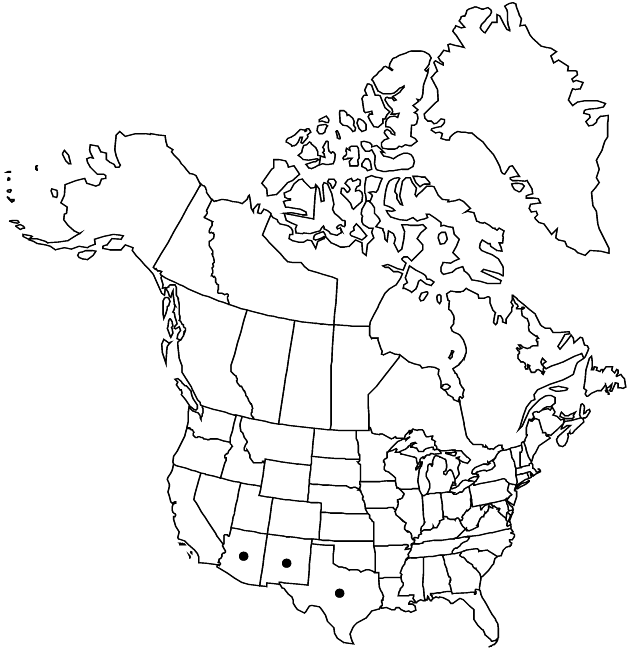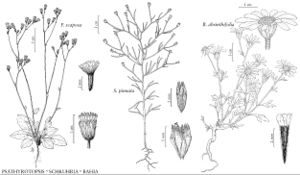Schkuhria pinnata
Repert. Spec. Nov. Regni Veg. 11: 308. 1912.
Plants (10–)25–40(–70+) cm. Stems usually strictly erect. Leaves mostly 10–25(–40) mm; blades linear or lobed (lobes 3–7+, linear to filiform), faces scaberulous (hairs ± conic, 0.1 mm) and gland-dotted. Peduncles mostly (3–)8–25(–30+) mm. Involucres obconic or obpyramidal, 4–6+ mm (each often subtended by 1–3, lanceolate bractlets). Phyllaries 4–6, green to purple, weakly carinate, oblanceolate to obovate, gland-dotted, otherwise usually glabrous. Ray florets usually 1(–2), sometimes 0; corollas yellow to white, laminae 0.8–1.2+ mm. Disc florets 2–6(–8+); corollas yellow (sometimes with purple), 1.5–2 mm. Cypselae blackish to buff, 3–4 mm, hirsutulous to villous, especially on angles; pappi of 8 white to tawny or purplish, obovate-rounded or elliptic to lanceolate scales 1–2.5 mm (sometimes some or all ± aristate). 2n = 20, 22, 40.
Phenology: Flowering Sep–Oct.
Habitat: Roadsides, pastures, wooded slopes
Elevation: 1500–2100 m
Distribution

Ariz., N.Mex., Tex., Mexico, Central America, South America.
Discussion
Schkuhria pinnata has been noted as persisting after plantings in Maine. Schkuhria pinnata (Lamarck) Kuntze var. wislizeni (A. Gray) B. L. Turner is a superfluous, illegitimate, name intended to refer to North American plants of S. pinnata.
